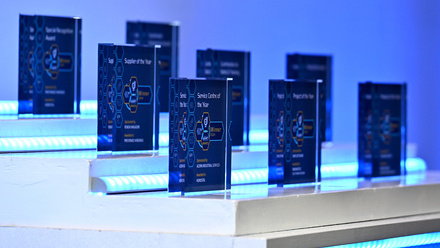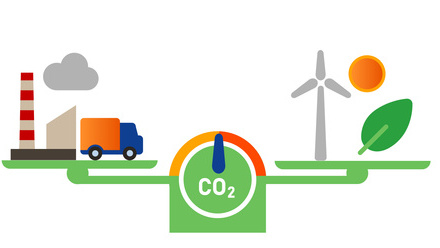Building Large Electric Motors Into the Circular Economy
Enabling a low-carbon society is integral to the pursuit of sustainability. One crucial building block that will make a substantial impact is circularity, centred on creating a culture that preserves resources and eliminates waste.
ABB is embedding circularity and sustainability across the value chain, which includes incorporating electric motors into the circular economy. The reason is that industrial motors currently use 45% of the world’s electricity. While efforts to improve efficiency have traditionally focused on smaller motors, the significance of large industrial motors cannot be overlooked. Even though ‘large’ electric motors, rated at greater than 375 kilowatts (kW), constitute less than 1% of the total, they contribute to 23% of the global electricity consumption by motors.
Studies indicate that for a 20-megawatt (MW) motor and drive package, over 99% of its total lifetime CO2 emissions are generated during operation only. Given the potential lifespan of large motors, which can be up to 25 years, optimising operational efficiency becomes crucial because the more energy is saved, the more significant the reduction in carbon emissions.
Circular practices, in the context of electric motors, involve the ability to recycle old motors, condensers, or generators at the end of their lifespan. The drive for circularity began with small (low-voltage) motors, where ABB has been actively helping customers replace old inefficient motors with new, highefficiency models. This initiative is now being extended to larger motors. As well as recycling old motors, the recycled materials should be incorporated into the building of new motors to complete the circle.
CIRCULARITY IN ACTION
ABB is partnering with Swedish-based Stena Recycling to allow customers to recycle their old motors. The partnership ensures that end-of-life motors and generators are recycled in an environmentally friendly manner, using the extracted metals in new products made in Europe. The recycled motors are replaced with new and more energy efficient motors.
ABB motors and generators are highly recyclable, with 98% of their materials able to be reused and the remaining 2% available for heat recovery through incineration. Customers benefit from a higher scrap value for ABB premium motors. They also receive a certificate of destruction declaring that the materials have been reused and no waste has been deposited, aligning with the sustainability goal of avoiding landfills.
When Stena Recycling receives a motor, it extracts the copper and steel while the remaining cables are left. The insulation material, which accounts for only 1.5-2% and cannot be reused, is incinerated by a district power plant. The extracted copper is sent to a melting plant, where it is used to create a new batch of copper wire to be used in building new motors. The traceability and documentation behind the materials ensure the closure of the copper loop and support sustainable practices.
REUSE RATIOS
As a supplier, ABB aims to deliver the most sustainable products possible. For example, it has assessed the material used in a 20MW motor and observed that by using only virgin materials to build such a motor, the CO2 footprint would be approximately 61 tons. However, ABB has reduced this to 41 tons by incorporating recycled content, and the company believes there is potential for further reduction.
It is crucial to ensure efficiency at every stage. To assess the environmental impact of a motor, ABB has conducted a life cycle assessment, taking into account all the units and components: Electrical steel, also known as transformer steel, which is used for the motor stator, has a surprisingly low recycling rate, but for good reason. Its intricate composition – involving precise alloying with silicon – makes it highly sensitive to contamination. Increasing the recycled content percentage much beyond 17% poses challenges as it becomes more prone to contamination and diminished silicon content. However, a recycling rate of 100% for the stator frame, rotor, and housing steel can still be achieved.
Attention is still needed around copper. Due to higher demands on the material, recycled copper cannot currently be used for the rotor as it creates technical limitations. Nevertheless, ABB’s long-term goal is to reduce the carbon footprint of the material used to produce a 20MW motor or generator from 61 to 29 tons.
THE IMPACT OF CO2 TODAY
Many companies are moving in the right direction by increasingly focusing on serial production and working towards reducing their operational footprint. Still, when it comes to building new power plants or facilities, there are significant opportunities for optimising efficiency and reducing the CO2 footprint. The actual savings are locked up in the number of motors, compressors and turbines used in such a project.
The solution lies in higher requirements in the future, such as minimum efficiency standards or environmental product declarations, which must include considerations for recycling and circularity. Pushing for these requirements is essential to drive progress in sustainability and establish circularity as the norm.
A key step is improving recycling rates. This will entail implementing improved separation methods, raising awareness, encouraging responsible disposal, and even greater collaboration with suppliers.







